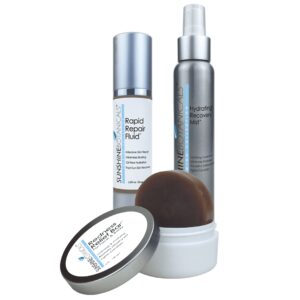
Interestingly, skin issues have been reported, partly due to the wide variety that has appeared in COVID-19 patients, making it more challenging to establish a consistent correlation.
Learning how COVID-19 affects the skin is very important. When you are concerned with aging and problem skin conditions, understanding how this virus can affect the skin makes knowing what healthy and immune-boosting ingredients to look for an absolute priority. Choosing products with healthy, non-toxic ingredients that incorporate antiviral herbs and botanicals can be the first line of skin defense. A recent study found that for 17% of COVID-19 patients with multiple symptoms, skin rashes were the first symptom to appear, while for 21% of patients, rashes were their only symptom. Identifying the effects of this virus on the skin may allow cases to be spotted earlier – or even picked up altogether in otherwise asymptomatic people. Identifying these could help limit transmission.
Let’s take a look at some of the topical manifestations of Covid-19 on the skin:
Hives, bumps, blotches, and toe discoloration ― as doctors learn more about the coronavirus, reports are beginning to emerge that COVID-19-positive patients sometimes experience different kinds of rashes on their bodies. It turns out that “COVID toes” are indeed a thing, but they’re not the only skin symptom you may experience if you’re carrying the virus, and rashes may appear even after your infection has cleared.
Dr. James Bradley, a board-certified plastic surgeon at Northwell Health, has worked directly with hospitalized COVID-positive patients. He has seen a wide range of skin symptoms firsthand, usually in one area of the body.
“We have seen almost a hive-like rash on the trunk, and I did see one 6-year-old who had it around the belly button and back areas,” he said. “It’s pinkish, raised, and itchy. I’ve seen other patients that it’s more like an eruption of small red bumps, which we’ve seen mostly in patients who are admitted with more serious infections going on. It’s hard for us to know if this is a viral manifestation or an immune response.”
Hive-like rashes, itchy or not, are the most common. Blotchy, red, migrating spots have also been noted along with areas that look like inflamed eczema, seborrheic dermatitis, or perioral dermatitis.”
There is a new diagnosis, “COVID toes”. Red blotches or even a hypothermia-like appearance of the toes may result from the virus, causing inflammation of blood vessels. Fingers and toes have the tiniest vessels and are, therefore, more at risk.
“A lot of the skin manifestations we see are representative of what’s going on internally with the organs, and fingers and toes relate to thrombosis and the damage to the inside of blood vessels,” Bradley said. “When you get blueish and reddish toes, it’s either thrombosis or damage to the vessels.”
Of course, COVID-19 is not the first virus to cause a rash — think chickenpox, measles, and hand, foot, and mouth disease. But unlike these viral illnesses, not every person infected with COVID-19 will develop a telltale sign on their skin.
Unfortunately, many people have also experienced hair loss due to Covid-19. Hair loss is the body shutting down unnecessary activity in times of extreme stress. Provided people’s iron levels are normal. The hair will come back and recover in time. Interestingly, cases of COVID-19 severe enough to take people to the hospital were much more common in people with male pattern baldness. One study found up to 79% of hospital admissions for COVID-19 were balding men. Hmm…
If the coronavirus can live for over 28 days on many surfaces, how long can it survive on our skin? The exact time is unknown, but it’s fair to say it stays long enough to spread from person to person, hence all the reminders to wash your hands (all the time)…
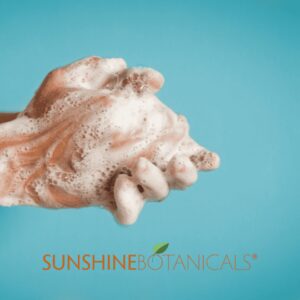
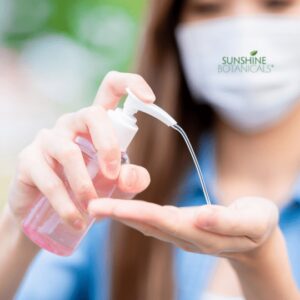
Interestingly, in commercial, institutional, and industrial buildings and equipment, Triclosan is incorporated into items such as conveyor belts and ice-making equipment and applied directly to HVAC coils as an antimicrobial pesticide to prevent microbial growth. They also use Triclosan as a material preservative in floors, shower curtains, and mattresses in residential and public access premises. You can also find Triclosan in materials, preservatives in adhesives, fabrics, textiles (footwear, clothing), and carpeting.
Drug and personal care products containing Triclosan are regulated by the Food and Drug Administration (FDA) under the Federal Food, Drug, and Cosmetic Act (FFDCA). The FDA issued a final rule stating that over-the-counter consumer antiseptic wash products (including hand soaps formulated as liquids, foams, and gels; bar soaps; and body washes) contain certain active ingredients (including Triclosan) will no longer be permitted to be marketed. Knowing this ingredient and hundreds more synthetic ingredients in topical products is important. Having a better understanding of what ingredients to avoid and what is healthy and effective is a top priority these days…
Does Nature Provide Solutions?
What Are Antiviral Herbs?
Antiviral herbs inhibit the development of viruses. Many of the best antiviral herbs boost the immune system, which allows the body to attack viral pathogens. These herbs can be even better than attacking specific pathogens, which antiviral drugs are designed to do because pathogens mutate over time and become less susceptible to treatment.
Not only do antiviral herbs fight viral infections, boost the immune system, and work as natural flu remedies, but they have many other health benefits, such as cardiovascular, digestive, and anti-inflammatory support. Incorporating these into your topical skincare formulations and daily nutritional routine will go a long way to help protect your skin and your health during these trying times.
Olive Leaf
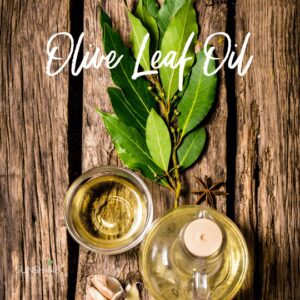
Echinacea
Echinacea, collectively and colloquially referred to as “coneflowers,” refers to a genus of herbaceous, perennial flowering plants endemic to eastern and central North America. The genus comprises nine different species, each of which is distinguishable by a spiny, bulbous pistil and slender “quill petals” that can either be white, pale pink, or yellowish in color. Extracts from this flower are known for their medicinal properties, particularly antimicrobial, antiviral, and possibly an antibiotic. Clinical evidence points to Echinacea as a potent therapeutic agent against various respiratory viruses, from the common cold to avian and swine-origin influenza virus. Read about Echinacea here.
Elderberry
Elderberry encompasses a variety of species within the genus Sambucus, family Adoxaceae. Elderberries are generally identifiable by their pinnate or serrated, feather-like leaves, whitish flowers, and clusters of black, blue, or red berries. Elderberries are widespread and commonly cultivated for medicinal use throughout the Northern Hemisphere. Traditionally, elderberry extract was utilized to treat fever and rheumatism throughout Central and Eastern Europe. It is also well-known for its antiviral and antioxidant potency and has been verified to possess anti-influenza effects in placebo-controlled clinical trials. Elderberry and elderflower’s most bioactive components include pectic polysaccharides and phenolic compounds. Read about Elderberry here.
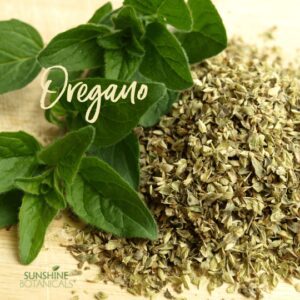
Oregano, or Origanum vulgare, refers to a flowering perennial herb endemic to Western and Southeastern Eurasia and parts of the Mediterranean. Its primary active component is carvacrol, which can also be found in pepperwort and wild bergamot. It is a member of the mint family and has a long history of culinary use, particularly in Italian, Turkish, and Greek cuisine. It also has a history of medicinal use in treating respiratory, gastrointestinal, and urinary tract diseases. Read more about Oregano
Licorice Root
Licorice Root (Glycyrrhiza glabra) refers to the root of the plant Glycyrrhiza glabra, a perennial legume found throughout the Mediterranean and parts of southeastern Asia. It is perhaps most well-known for its taste and flavor for sweetening confectionary, or the root is eaten directly as a candy. Licorice root also has a long medicinal use history in both traditional Chinese medicine and the Indian Ayurvedic healing system. Read more about Licorice
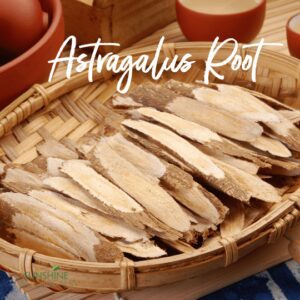
Astragalus Root refers to a genus of approximately 3,000 herbaceous, perennial plants and is thus the largest genus of flowering plants currently known. The plants within the genus are members of the legume families Fabaceae and Faboideae. Most commonly used in traditional medicine is Astragalus membranaceous, also known by its Chinese nomenclature Huáng Qí, or simply “Astragalus root.” The plant is commonly harvested in northern and eastern China and parts of Mongolia and Korea. Astragalus root is traditionally used for its immunostimulating effects, which are mechanistic of the most bioactive substance in the plant root, Astragalus polysaccharide (APS). Astragalus polysaccharides are also purported to have potent antiviral properties. Read about Astragalus Root.
I hope this information helps you find your solution, and I can’t wait to show you more! Follow us on FB and sign up for our newsletter.
My passion is your Solution,


Thank you for this information!!!
It is my pleasure!